
For the past year, I’ve been putting out a newsletter about adult gaming called Naughty List News almost every week. I say “almost” not because I missed a week, but because I started out by posting every two weeks instead of every week.
In that year I’ve grown my audience from four close friends and colleagues to over 300 people around the world. Pretty good for someone who prides his anonymity to the extent that he, a straight man, stole his nickname from a dead gay man.
If you’re interested in improving the chances of getting your writing seen or even starting your own newsletter, here are the 13 most important things I’ve learned since starting my own.
Show up every time
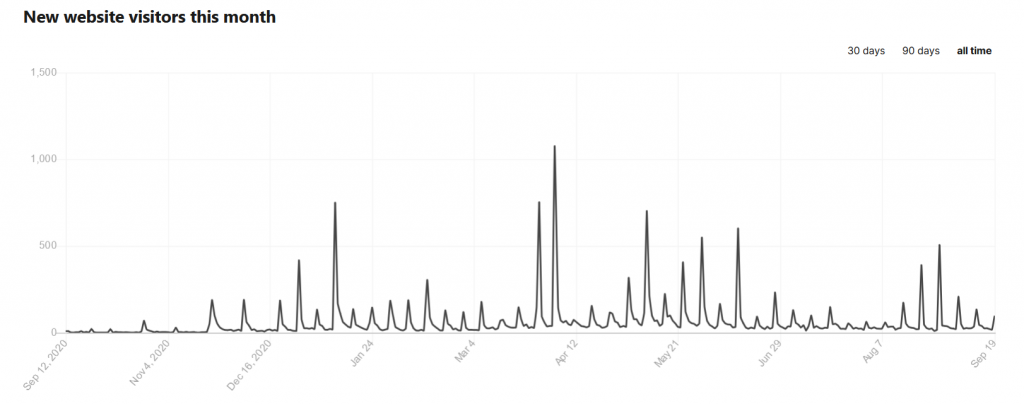
The best way to get outsized results is to be consistent in your output. Because my newsletter comes out every week, I can’t just post whenever inspiration strikes me. I have to show up again and again and tell the world about what’s been happening in adult games. It’s the news, after all.
Sometimes I feel particularly inspired and the words flow right out of me. Other times it’s like pulling teeth. Regardless, the newsletter goes live on Sunday morning, so I had better make sure it’s done.
Being reliable about posting every week tells my audience what to expect. They know when they will get my next e-mail from me and they have a good idea of what will be in it.
I like to think that being reliable and consistent with posting my newsletter helps reduce churn, by which I mean people unsubscribing. According to a formula I found for calculating churn in newsletters, the median “churn number” for my posts is 0.6, which indicates a normal amount of e-mails bouncing and people unsubscribing.
You should only be worried about churn if this number goes over 1.0 because that indicates a slowly dying publication.
The ‘Net wakes up in America

I post my newsletter every Sunday morning at 8 AM CEST. This is mainly because it’s a convenient time for me because it’s actually a terrible time to post if you want any kind of engagement.
If you define the social Internet as Twitter, Facebook, Instagram, Imgur, Reddit, etc. then I’ve found that the best times for posting my newsletter are between 2 PM CEST and 6 PM CEST. This tracks nicely with what HootSuite found when they tried to find the best posting times.
My theory is that these times work because people like to start their day by scrolling their feeds. And we all tend to wake up between 8 AM EST and 12 PM EST.
But I also want to capture some of that English-speaking portion of the world that lives in UTC+9 and beyond. So my strategy is to first post on 9 AM CEST (2 AM EST / 4:30 PM ACST) and then bump on 3 PM CEST (9 AM EST / 10:30 PM ACST).
It’s impossible to stress how important this is. If you don’t take your posting times into account then your newsletter is doomed before you even put a single word to (digital) paper.
Put yourself out there
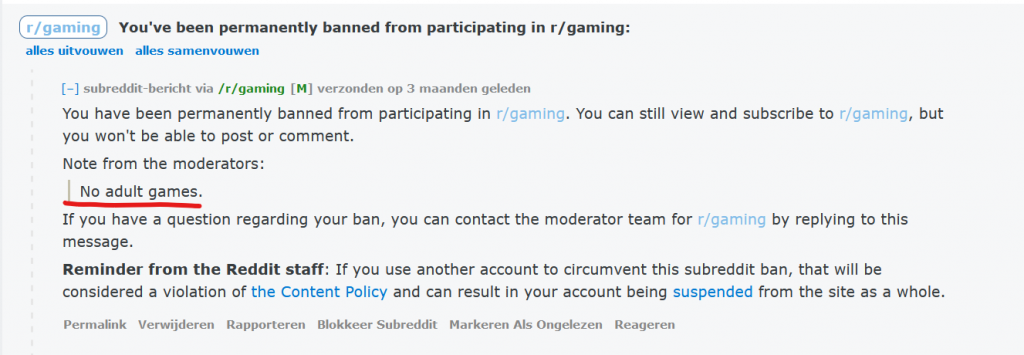
You might think it’s hard to talk about and promote your adult gaming newsletter. It’s really not. I’ve shown my newsletter to friends, family, coworkers, strangers, etc. Yes, in real life.
I even got a few of them to sign up!
My point is that you have to be bold when it comes to promoting yourself. Yes, I’m putting myself out there with a topic that rubs some people the wrong way, even if I do so anonymously. But if I can’t enthusiastically recommend my newsletter, is anyone else going to do it for me?
Similarly, I have no problem with going to a new Discord server and immediately start promoting my stuff. I get some pushback every now and then, but I need fresh eyeballs if I want to grow my audience.
I’m also constantly looking for ways to tie the news back to adult gaming. I wrote about how OnlyFans banning porn could affect adult games, harassment after the release of Boyfriend Dungeon, and how some people really like the chunkier Thor in God of War: Ragnarok.
To put it simply, I don’t think you can grow without challenging yourself.
Meet your audience where they are
Social media platforms love images and ignore any text longer than a paragraph. This makes sense: they’re designed for immediate consumption of “content”.
But what to do if your whole raison-d’être is long-form writing? Well, you have to meet your audience where they are.
On Twitter, that means turning an article into a thread:
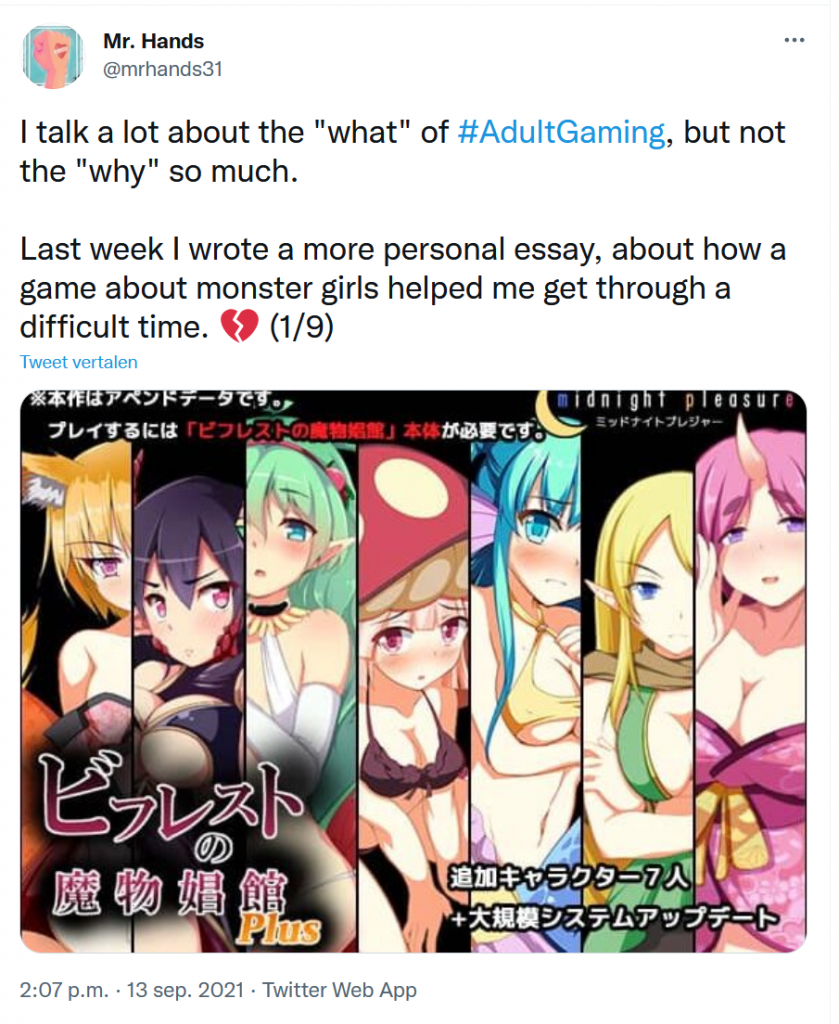
On Imgur and Reddit, it means that I post a summary image of my newsletter that just gives people the headlines:
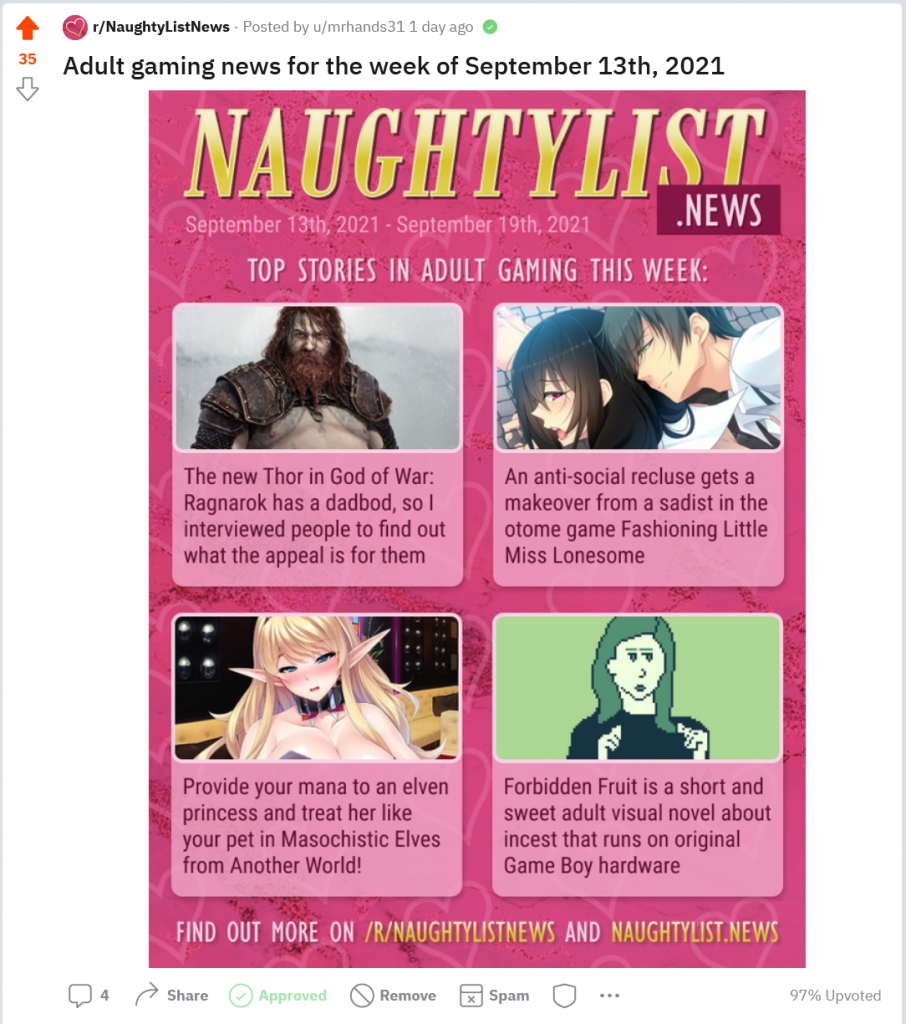
Working along the expectations of your audience instead of against them is a good way to build goodwill in these communities. It’s a slow process, but if you keep showing up, it will definitely pay off in the long run.
And as you’ll see next, creating content that is tailored to a given platform isn’t as much work as you might think.
Make the right things easy
The only reason I’m able to post a newsletter every week is that I made it as easy as possible for myself to do so. I still have to write the words of course, but I don’t spend nearly as much brainpower on what it should look like or how I should promote it.
Turning a habit into a positive reinforcement loop is what the productivity book Atomic Habits calls “making it easy”. Let me show you some examples of how I apply this principle.
When I write a newsletter, I don’t start from a blank canvas. Instead, I make a new page in Notion from a template, which includes a template for my newsletter:
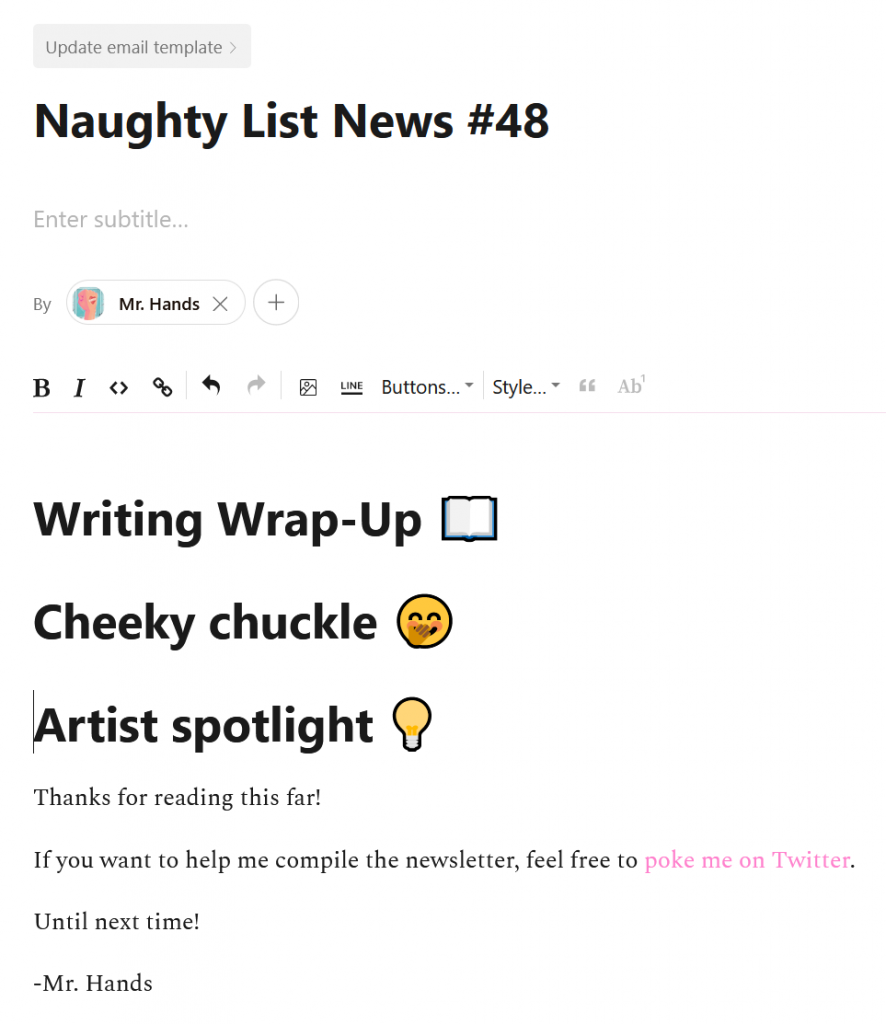
Then I update the previous newsletter to include states on subscribers, open rate, click-through rate, etc. With these stats, I can calculate my churn rate, which helps me make slightly more data-driven decisions.
Next, I use Figma for all my graphics, which makes it very easy to swap in new headlines for my summary image. All I have to do is update four images, four headlines, and the timestamp. Then I export a PNG and store it in Google Drive.
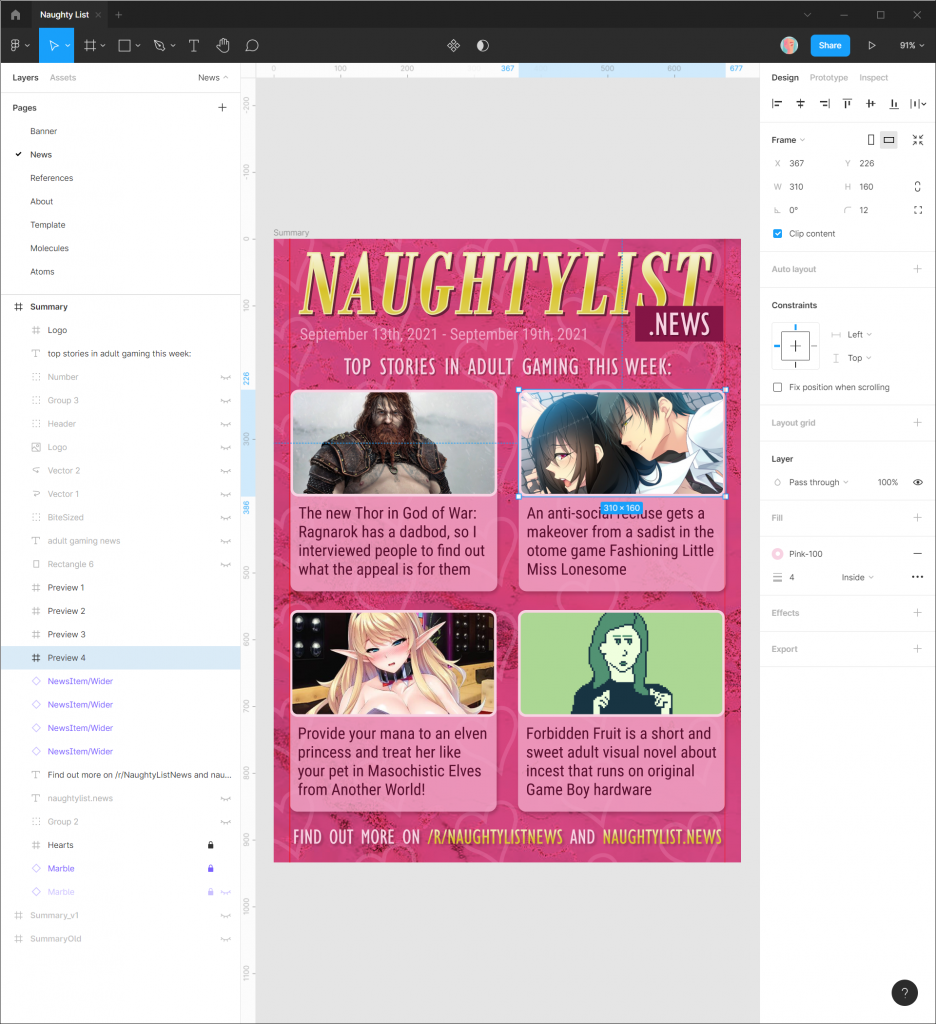
Once a newsletter goes live, I use a checklist to keep track of where and how I should promote my newsletter.
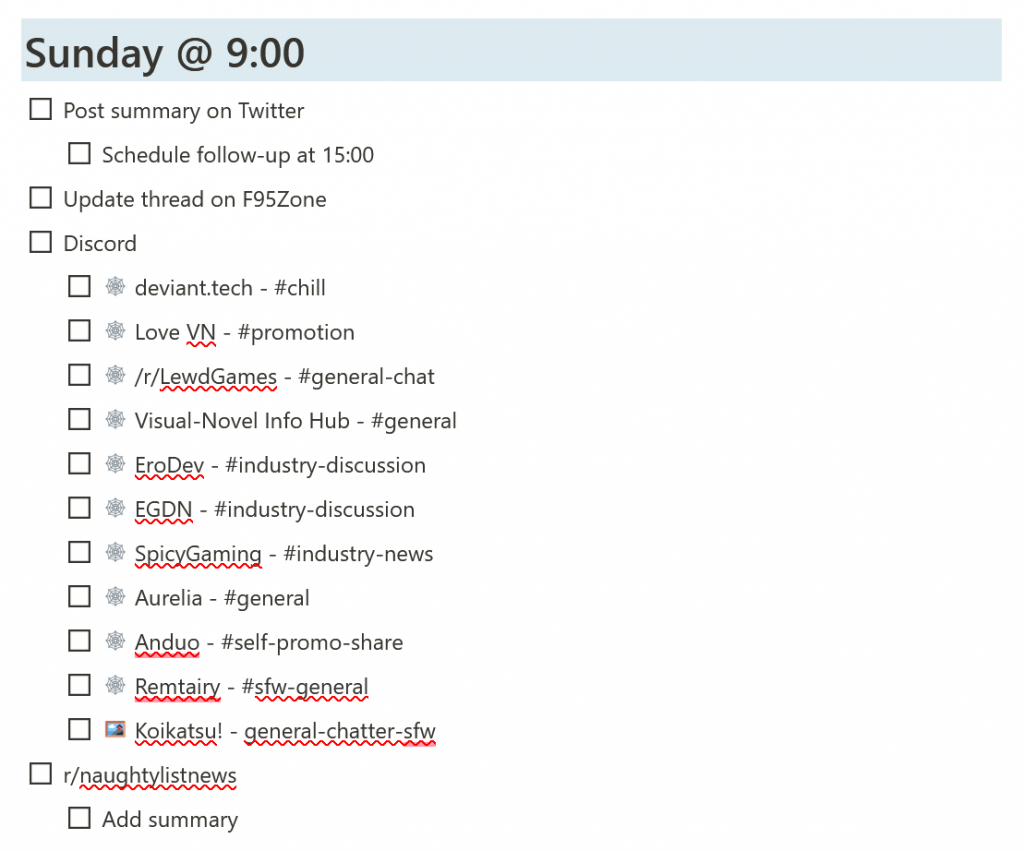
These tools combine to form a robust system that prevents mistakes and reduces the amount of time I spend on things that aren’t actually writing the damn thing.
Curate your content
What’s far too easy to lose sight of is that you have the final say about what appears in your publication. It’s equally as important to decide what you put in your writing as it is what you leave out.
Most of my news comes from RSS feeds that I manage with Feedly. I filter these stories for relevancy, looking for news about adult games or just adult themes in more mainstream titles.
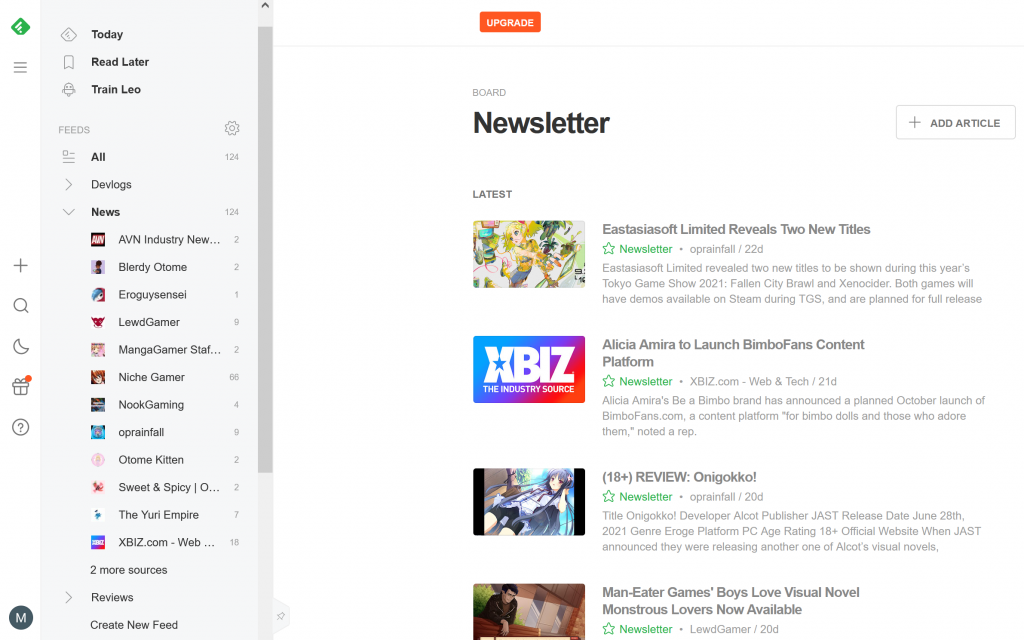
What this means is that I’m constantly making decisions about what goes into each newsletter. Even though the page itself is virtual and unlimited, my audience’s attention span absolutely isn’t. As I’m curating my feeds, I’m deciding for each article not just whether it’s relevant, but also whether it shows the values I want to portray.
Another example of editorial discretion is that I don’t always say yes to promotions. I was once offered a code to review a game for my newsletter. But when I looked at the game, I found that it was based on sexual violence against women. I politely declined the offer.
Sexual violence is not what I want to feature in my newsletter. Not only is there enough of that in the real world already, but it also gives people the wrong impression about what adult games are or can be.
Because my goals and values are clear to me, it was easy to compare them against the offer to cover this game. Instead of being wishy-washy about it, I was able to give a fair answer about why I had to decline.
As my audience grows, I feel it becomes more and more important for me to be clear about my values, and biases as well, when I cover the news.
Social media is a gamble
Nobody can tell you why any particular post on social media goes viral or fails to gain traction. Anybody that does claim to be able to do so is most likely trying to sell you some of their snake oil.
Let me give you a practical example.
Here are two of my posts on Imgur. They have the same layout, the same title, and they were posted at the same time of day. One was featured on the front page’s “Most Viral” posts and the other languished in “usersub”.
What’s the difference?
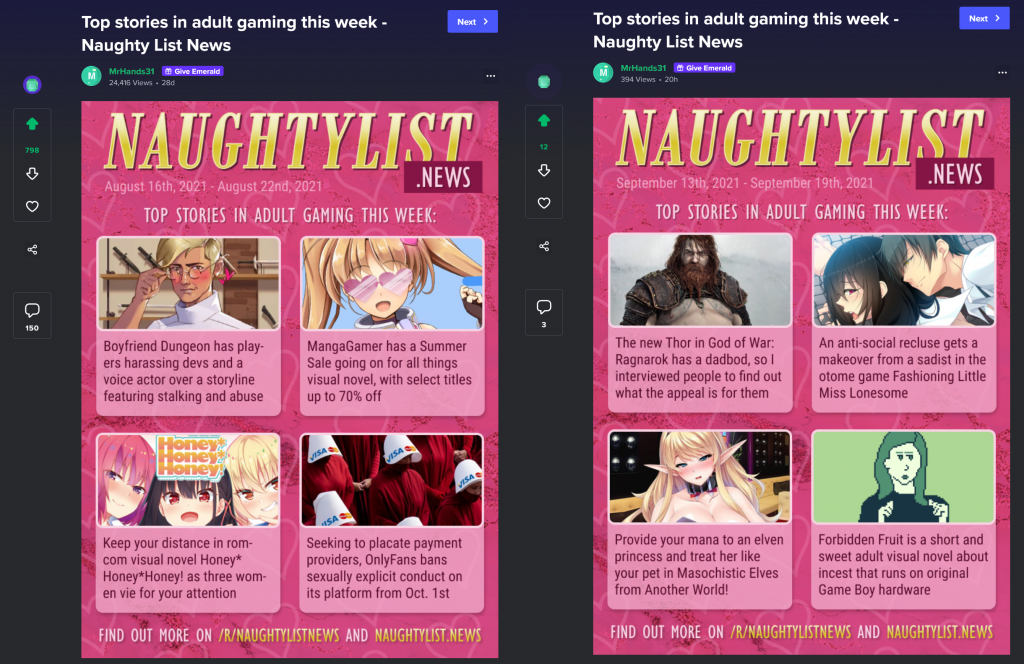
It’s easy to trick yourself into thinking that it must be related to the actual content. And on some level, that’s of course true. Maybe people are more interested in reading about Boyfriend Dungeon than God of War, for example.
But random chance has much more to do with what goes viral than any of us care to admit. Maybe the first post went viral because the right people promoted it at the right time. Or it happened to tap exactly into a prevailing sentiment. But none of these factors are within your control, so there’s no point in worrying about them.
The fact that one of my posts did go viral tells me that I’m on the right track though. All I have to do now is keep showing up.
Likes are just noise

Would you rather have 10,000 likes or $100?
The answer may seem obvious, but our behavior often doesn’t reflect it. For the success of my newsletter, the most important stat is the number of subscribers. These people know and trust me already, which means I can reach out to them directly when I have something of my own to promote.
And the best part about this audience is that I own it. It’s not tethered to the platform I use for my mailing list, because even if they go bankrupt, I still have that list of addresses.
In order to get subscribers, you need to have page views. So that’s the next stat I care about it. Every view is a potential subscriber, so it’s important to keep that number high.
Finally, comments are rare, but they provide meaningful and useful feedback. Even a bad and low-brow comment shows someone willing to engage with what you’re putting out into the world. And I do act on their feedback sometimes!
Anything else though?

Likes on Twitter may theoretically boost my profile, but they rarely translate into views on my newsletter. Similarly, if my summary image goes viral on Reddit or Imgur, that doesn’t translate into an uptick in views.
Instead of chasing the next dopamine high of a big number on social media, I try to frame these results in terms of my goals.
My goals are to keep writing a newsletter every week and to entertain my audience. It’s all the better if I can get 10,000 likes while doing that, but it’s not a priority for me.
If my subscriber base is slowly climbing up every week and I don’t see a huge uptick in people canceling their subscription, then I’m right where I want to be.
Dare to experiment
The first year on any new project is going to be a lot of trial and error. I noted before that the first few editions of my newsletter were sent every two weeks instead of every week. This was because I was solely focused on doing game reviews instead of covering the news.
But what I found rather quickly is that reviewing four new games, even every two weeks, is a lot of work. Especially because I was doing it as a hobby, it basically meant I was spending all of my free time playing these games and writing about them.
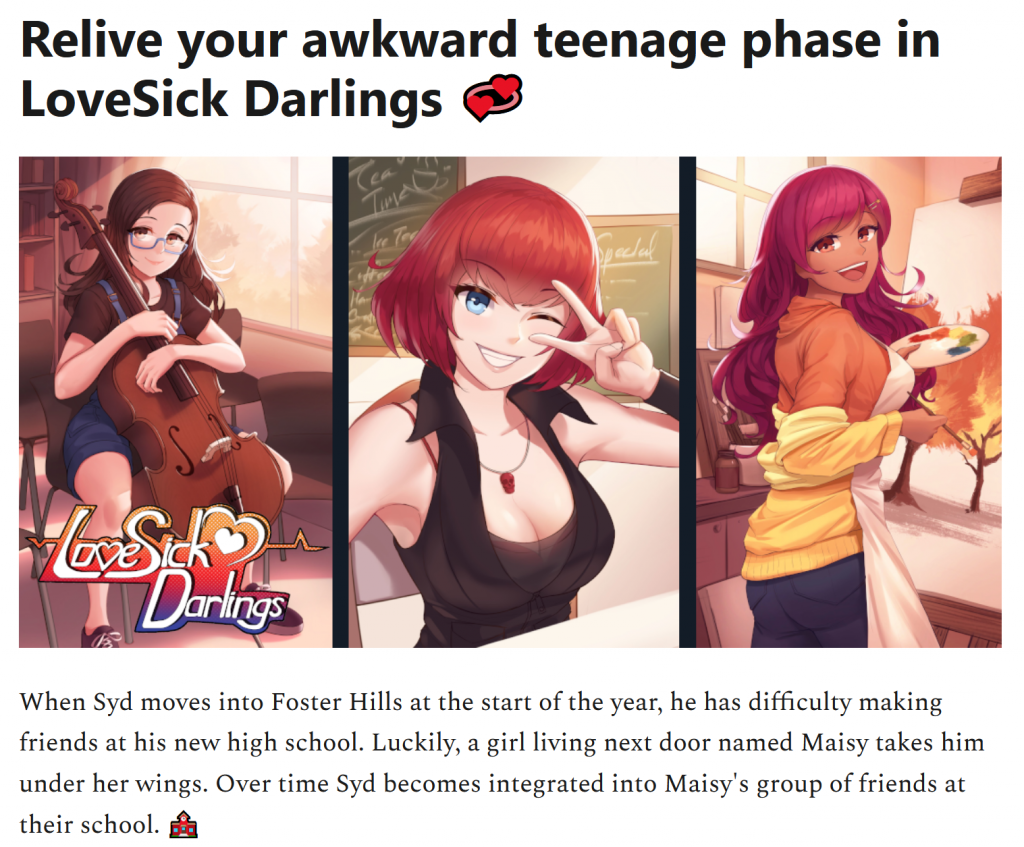
Writing about the news was an experiment for me. By trading quality for quantity, I was hoping to claw some of my time back. And it turned out to be a huge success. There’s a lot less pressure to perform now and writing regularly was a fun hobby again.
Not all experiments will turn out great, but you have to avoid getting stuck in a local maximum, especially when you’re just getting started.
Sweat the small stuff
Similarly, I experimented a lot with the form of my newsletter. I noticed that I would never get a lot of engagement when I posted a link to my newsletter. I suspected this was because of my header image.
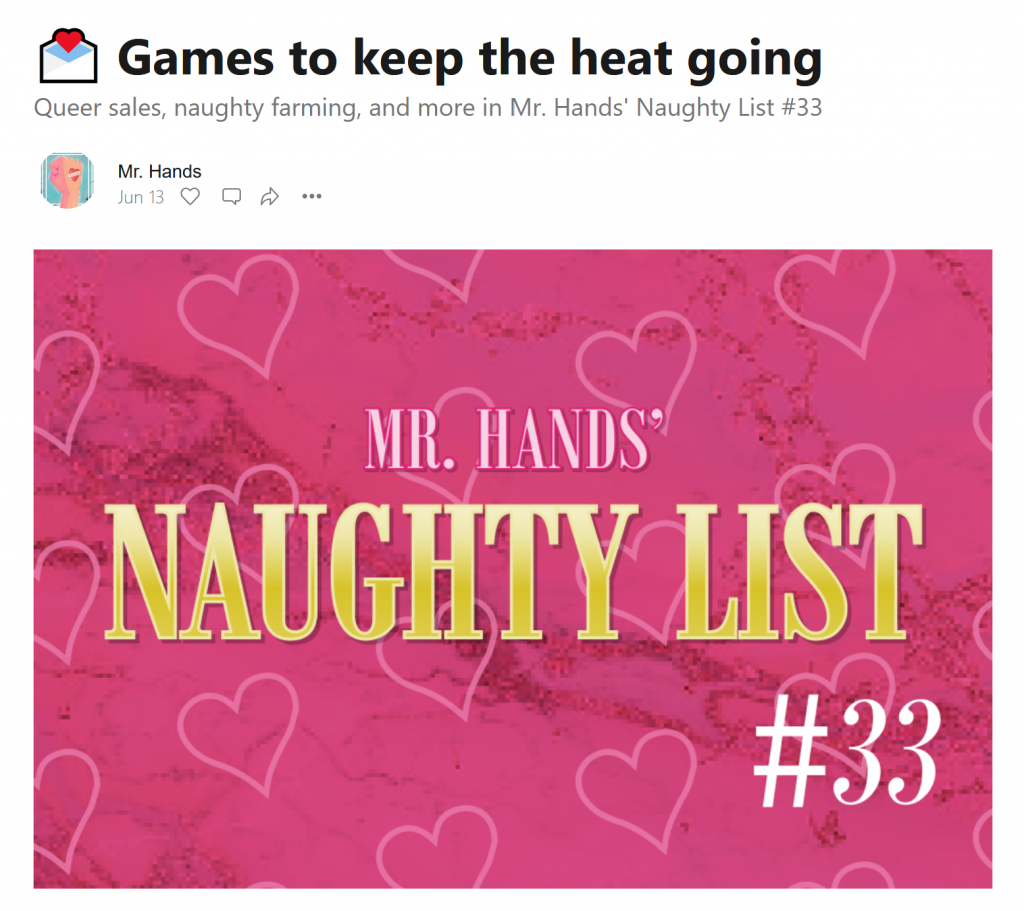
When I changed my header image to be more relevant to what I was going to cover, I saw a noticeable uptick in discussions about my newsletter on places like Discord.
Ultimately, improving your header images, your website icon, your profile image, etc doesn’t move the needle overnight, but it does matter.
Small improvements add up over time to create a more polished experience and people will notice that. Your posts become easier to recommend and word-of-mouth will propel you forward.
I tend to pull the tackle these small things a lot sooner than most. Every week I was trying to find the next small thing to improve. And while I don’t recommend that approach necessarily, it did pay off for me in the long term.
Keep a deep bench
The best trick for posting a newsletter every week is to always be working multiple stories at once. Unfortunately, that’s also quite time-consuming.
When I was still writing reviews for my newsletter, I would use a Kanban board to keep track of them. Being able to move cards around on the board helped me figure out where I needed to spend my team. Once enough reviews were done, I could compile them into the next newsletter.
It’s a good way to avoid feeling burnt-out on a particular story, but it can also mean that you have loads of stories in the pipeline while none of them are actually finished.
It definitely helps to follow people from the adult gaming industry on Twitter and Discord. They often post snippets in conversation that then become leads for me to look into. I’ve written multiple stories based on a single tweet or Discord message.
But I definitely don’t always follow my own advice. I wrote many of my newsletters on Saturday evening, right before the Sunday morning deadline.
I can make you read this
After when you post, nothing is more important to the success of your posts than what you title them.
David Ogilvy shares his advice on how to write good copy in Confessions of an an Advertising Man:
On the average, five times as many people read the headline as read the body copy. When you have written your headline, you have spent eighty cents out of your dollar.
David Ogilvy, How to write potent copy
This book is from 1963 (!) and yet his advice still holds up in the age of the Internet. That’s because while literally, everything, has changed about advertising since then, people definitely haven’t.
Take his advice to heart and spend the majority of your time crafting the perfect title.
Get started
With tools like Substack, Revue, MailChimp, ConvertKit, etc. now being available, it’s never been easier to start a newsletter and start broadcasting your opinions. As a result, there’s a lot of competition out there for people’s inboxes.
If you don’t already have an established audience, it’s an uphill battle to gain traction. After a year of doing this, I’ve managed to collect 319 e-mail addresses. Don’t get me wrong, that is a lot of people interested in adult gaming news, but it’s not a number that screams “quit your job and start writing full-time”.
I am therefore under no illusion that I will ever make money with my newsletter. Adult gaming is an extremely niche subject and there’s no money in journalism anyway. But I can try to be the best newsletter about adult gaming.
And I’ll just have to see what happens then.